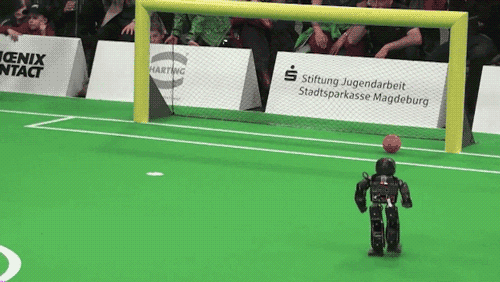Image: Willyam Bradberry/Shutterstock
Speaking at the Turing Lecture in Dublin, Dr Guruduth Banavar detailed where he believes AI is going. Luckily, it won’t be like in the movies.
A screen turns on and a movie trailer plays. It’s soon clear what’s going on. There’s a robot, a humanoid beyond anything we’ve realistically achieved to date.
It’s grim, there’s breaking glass, ominous music, a ‘tantrum’ and the credits show: Morgan, a 2016 movie with a trailer devised by IBM Watson.
Dr Guruduth Banavar, IBM VP and chief science officer, then takes the mic and the esteemed Turing Lecture, held in Dublin to celebrate the Irish Computer Society (ICS)’s 50th anniversary, is underway.
“Everyone thinks of AI as robots like this,” he begins, pointing at Morgan. “Killers.”
Banavar thinks AI is heading in a dramatically different direction, proposing that the technology will instead “work with humans, rather than as humans”.
He points back to the screen and explains Watson’s role in the Morgan trailer. It used algorithmic processes to establish how a trailer should progress – the music, the scenes etc.
“But it still needed humans, people to finish it,” he said.
Apples and oranges
Humans, according to Banavar, excel in areas involving self-directed goals, and value judgements and the rather nebulous ‘common sense’ side of things. Machines, though, are perfect for large mathematics, pattern discovery and statistical reasoning.
The two are intertwined, he said, and that’s before we even get into sarcasm and humour, the areas Banavar claims computers find the most difficult to understand and replicate.
Though that’s not to say AI is being held back. Far from it.
In 1979, a computer program was developed that defeated reigning backgammon world champion Luigi Villa, but this was put down to luck. By 1983, IBM got involved and TD-Gammon competed at an elite level.
In the 1990s, Deep Blue – again an IBM creation – lost to Garry Kasparov, the world’s best chess player at the time, in a tight 4-2 match. It returned one year later to defeat Kasparov.
Image: AH86/Shutterstock
Ready, set, Go
Go, a game of statistical reasoning and pattern discovery, was next in AI’s crosshairs, with Google finally working out a way to beat world champion Lee Sedol last year.
These were statistical studies, and machines were eventually able to process enough data to prosper in games of restricted moves, with strict parameters clear for all to see.
This was all improved upon last month when Libratus, a program developed in Carnegie Mellon University, defeated four professional poker players over 480,000 heads-up, no-limit hands.
Watson, for its part, had won a game of Jeopardy! a few years earlier, meaning that between the two games, AI proved it could understand language, skill, bluffing, communication and, at the base of it all, it had a superior ability to understand risk and reward.
“Jeopardy! was interesting,” said Banavar, “as language is the highest form of cognition. Machines struggle to understand language.
“Some areas are uniquely difficult – humour, sarcasm – and these are areas for humans. However, going through files for medical professionals or legal professionals, that is for machines.”
Helping us out
The ‘cognitive assistant’, so, is where Banavar and his IBM colleagues see technology moving towards. And we’re not far off.
Cognitive navigational assistants for the blind, for example, are perfectly feasible. Teaching assistants already exist, and are already tricking students into believing they are communicating with real people.
Image: Besjunior/Shutterstock
“Knowledge itself is an expanding phenomenon,” said Banavar.
The Turing lecture series was initiated by the Institution of Engineering and Technology in 1999, in honour and recognition of Alan Turing’s contribution to the field of computing.
ICS will hold a series of talks this year to celebrate its 50th anniversary, though the Turing Lecture is perhaps the blue riband event.
More to come
Banavar pointed out all the things AI has achieved so far – Go, poker, chess, backgammon, Jeopardy!, trading assistants on the stock exchange, autopilot etc – however, it’s what’s to come that seems most interesting.
Banavar mentioned a radiology assistant, pointing to examples of Watson helping doctors to better diagnose breast cancers in patients. “This is near,” he said.
Elsewhere, the RoboCup, a challenge to get a team of robots to play football to a human level, is aiming for a 2050 end-date.
That particular target, at the moment, seems optimistic.

Image: Imgur
The ultimate AI end development, though, is Morgan, the humanoid robot. Banavar calls this the Turing Android – and he thinks it’s further away than most people realise.
In between is an awful lot of cognitive collaboration. “AI will work with humans.” So goes the Banavar mantra.